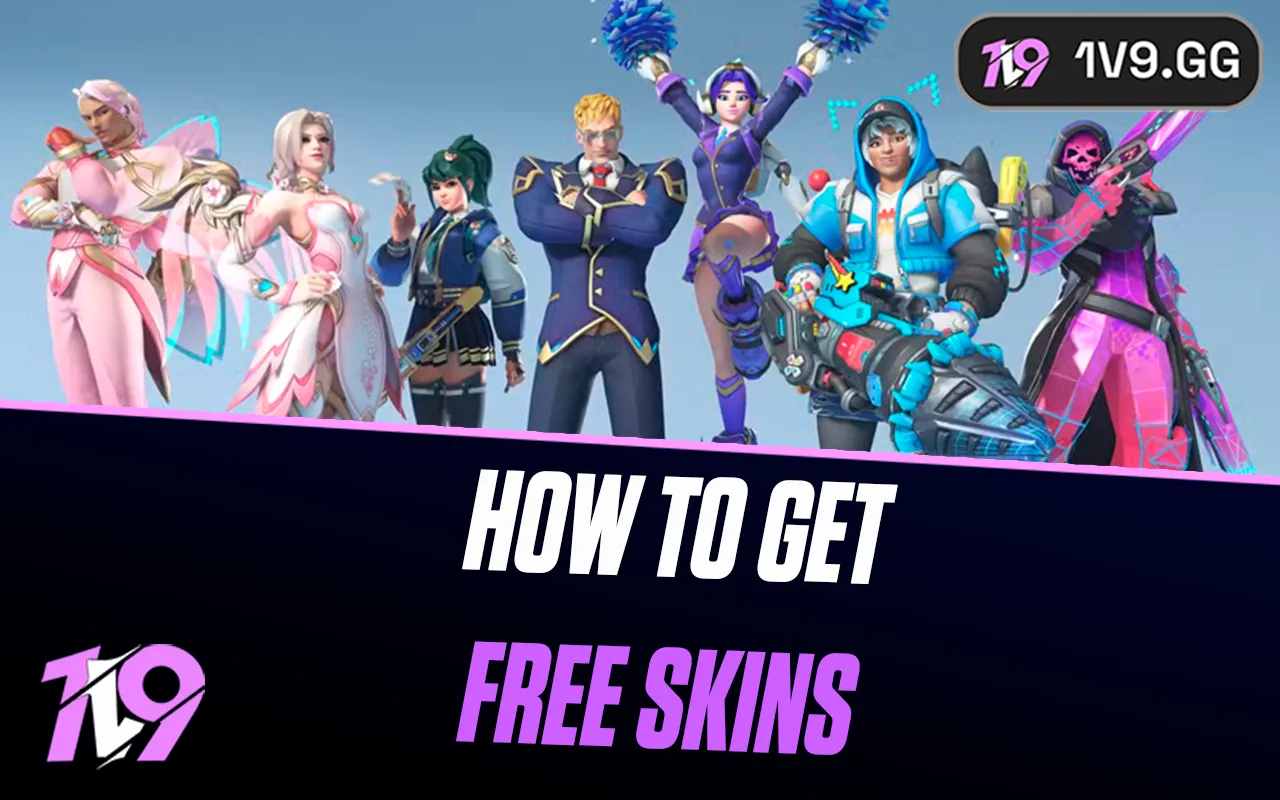- Home
Games
 League of Legends
League of Legends Valorant
Valorant Clash of Clans
Clash of Clans Rainbow Six Siege
Rainbow Six Siege-a6d5b3e156bb.webp) Fortnite
Fortnite GTA 5
GTA 5 Counter-Strike 2
Counter-Strike 2 Call of Duty
Call of Duty Dota 2
Dota 2 Genshin Impact
Genshin Impact Minecraft
Minecraft Dragon Ball Legends
Dragon Ball Legends Rocket League
Rocket League Clash Royale
Clash Royale Squad Busters
Squad Busters Rust
Rust Apex Legends
Apex Legends Pokemon Go
Pokemon Go XDefiant
XDefiant LoL: Wild Rift
LoL: Wild Rift Hay Day
Hay Day Diablo 4
Diablo 4 FC 25
FC 25 Destiny 2
Destiny 2 Marvel Rivals
Marvel Rivals World of Warcraft
World of Warcraft-9ede9dc6b01b.webp) PUBG Mobile
PUBG Mobile The Finals
The Finals Deadlock
Deadlock Growtopia
Growtopia Forza Horizon 5
Forza Horizon 5 Honkai: Star Rail
Honkai: Star Rail Warframe
Warframe 8 Ball Pool
8 Ball Pool Zenless Zone Zero
Zenless Zone Zero Path of Exile
Path of Exile Runescape 3
Runescape 3 Raid: Shadow Legends
Raid: Shadow Legends Lost Ark
Lost Ark Summoners War
Summoners War WoW: Classic Era
WoW: Classic Era WoW: Season of Discovery
WoW: Season of Discovery WoW Cataclysm
WoW Cataclysm WoW: Hardcore
WoW: Hardcore Throne and Liberty
Throne and Liberty New World
New World Escape From Tarkov
Escape From Tarkov Mobile Legends
Mobile Legends Path of Exile 2
Path of Exile 2 Blade Ball
Blade Ball Fisch
Fisch Pet Simulator 99
Pet Simulator 99 Pets Go
Pets Go-d8bcef7708c7.webp) One Piece Bounty
One Piece Bounty Anime Adventures
Anime Adventures Blox Fruits
Blox Fruits Adopt Me
Adopt Me Murder Mystery 2
Murder Mystery 2 Fragpunk
Fragpunk Wuthering Waves
Wuthering Waves Free Fire
Free Fire Teamfight Tactics
Teamfight Tactics Albion Online
Albion Online Black Desert Online
Black Desert Online Honor of Kings
Honor of Kings Brawl Stars
Brawl Stars Arena of Valor
Arena of Valor Call of Duty: Mobile
Call of Duty: Mobile Rematch
Rematch Steal a Brainrot
Steal a Brainrot Grow a Garden
Grow a Garden FC 26
FC 26 Old School Runescape
Old School Runescape Plants vs Brainrots
Plants vs Brainrots Overwatch 2
Overwatch 2 Battlefield
Battlefield Arc Raiders
Arc Raiders Roblox
Roblox Fallout 76
Fallout 76 Jailbreak
Jailbreak Type Soul
Type Soul GPO
GPO- Lootboxes
- Become Affiliate
- Blog
- Contact Us
- Sign In

How Does Low Priority Boost Work in Dota 2?
When exploring Dota 2 boosting services, you’ll encounter several types, including MMR boost, Calibration games, and Low Priority boost. To understand how Low Priority boost functions, it’s essential to grasp what Low Priority queue is and the circumstances that can land you in this less desirable status.
In this article, we dive into the specifics of Low Priority in Dota 2, explaining the mechanics behind it and how you might end up there. We will then connect these elements to explain the concept and process of Low Priority boosting, offering insights on how this service can help you escape the penalties and resume normal play more quickly and efficiently.
What is Low Priority in Dota 2?
Low priority in Dota 2 is a penalty system designed to manage players who disrupt the game’s community by quitting matches prematurely, getting repeatedly reported, or exhibiting negative behaviors like intentional feeding or going AFK. If a player falls into these behaviors, they are placed into the low priority queue.
Being in low priority affects how quickly you can get into games; matchmaking takes longer than normal, and all games must be played in the unranked single draft mode. This means players in low priority cannot earn MMR during this period. Additionally, since you’re only matched with other players in low priority, finding a game can be significantly delayed, compounding the penalty’s impact.
Steam Community
In the Steam Community, when you’re placed in Dota 2’s low priority queue, the penalties extend beyond slow matchmaking. In this queue, you won’t receive item drops or earn trophies. Additionally, if you attempt to join a party while in low priority, every member of that party also inherits the low priority status for as long as you remain together.
The consequences escalate if you abandon a match while in low priority. The first abandonment results in a 20-minute ban, and a second offense increases this to a 24-hour ban.
Exiting low priority isn’t straightforward—it requires not just playing, but winning a set number of matches. For example, if you are penalized to win three matches in low priority, only victories count towards clearing this status; losses do not count against you, but they also do not help you progress out of low priority.
Instead of enduring heightened stress levels trying to navigate out of low priority, consider utilizing a service like Eloking, which is available to assist you 24/7 in escaping this challenging queue with less frustration.
How does low priority boost work?
Understanding low priority in Dota 2 is crucial before delving into how low priority boosting functions. Given the frustrations associated with long wait times for matches and the likelihood of encountering disruptive players in low priority, many turn to boosting services as a solution. These services help players escape low priority by either having a booster log into their account to win the required matches or by teaming up with a booster who plays alongside them, significantly enhancing their chances of winning.
The latter option is often preferred because it minimizes the risk of detection by Valve. It appears as if you are simply playing with a highly skilled friend, which is less suspicious than sudden improvements from usual gameplay patterns. Boosting services like 1v9 ensure that boosters are not only highly skilled but also start working on your request swiftly—typically contacting customers within 10 minutes of order confirmation to coordinate the process.
The duration to clear low priority via boosting largely depends on the number of wins required, but services typically aim to complete the process within 48 hours. This efficient turnaround time, combined with the strategic advantages of playing with a skilled booster, makes low priority boosting a popular choice for players eager to return to regular Dota 2 play without the headaches of the low priority queue. Before opting for this route, however, it’s advisable to review safety guidelines and risks associated with Dota 2 boosting to ensure you make an informed decision.
Conclusion
Navigating Dota 2’s low priority queue can be a daunting challenge due to long matchmaking times and the potential for difficult game dynamics with other penalized players. Low priority boosting offers a practical solution, allowing players to effectively and efficiently escape this punitive status. By either having a booster log into your account or partnering with one in your games, you can achieve the necessary wins to exit low priority swiftly. While direct account boosting is an option, teaming up with a booster minimizes risks associated with detection and replicates playing alongside a highly skilled friend. As boosting services promise quick and professional assistance, they present a viable option for players looking to improve their gaming experience without enduring the frustration of the low priority system.
Posted On: August 21st, 2024
Recent Articles
💬 Need help?
Our 1v9 support team is available 24/7 to help you with any questions or issues you may have.
support@1v9.gg
Loading...
1v9.gg is not endorsed or affiliated by any game developers or publishers.
2025 1v9, All Rights Reserved, Created By NightDev






